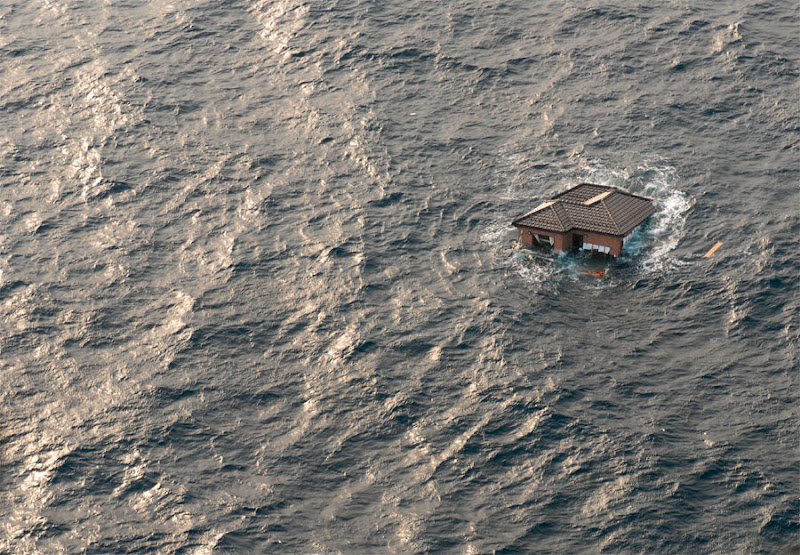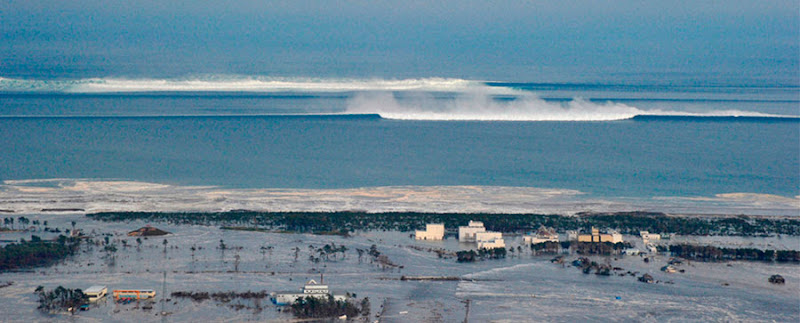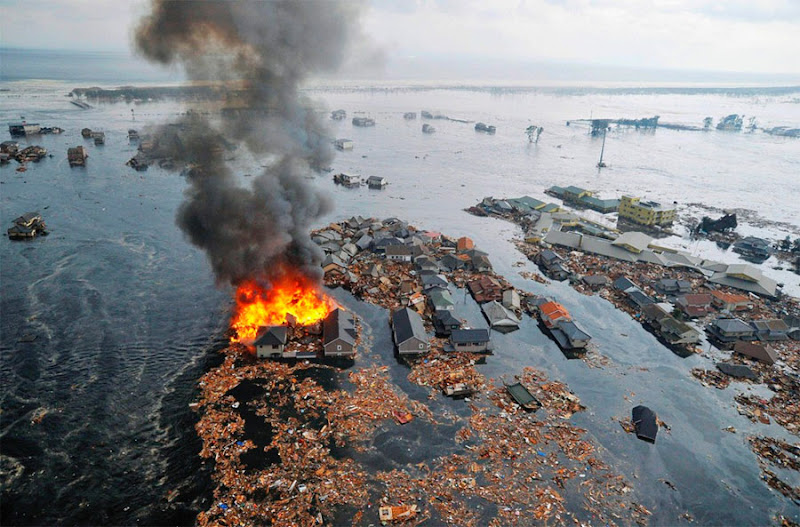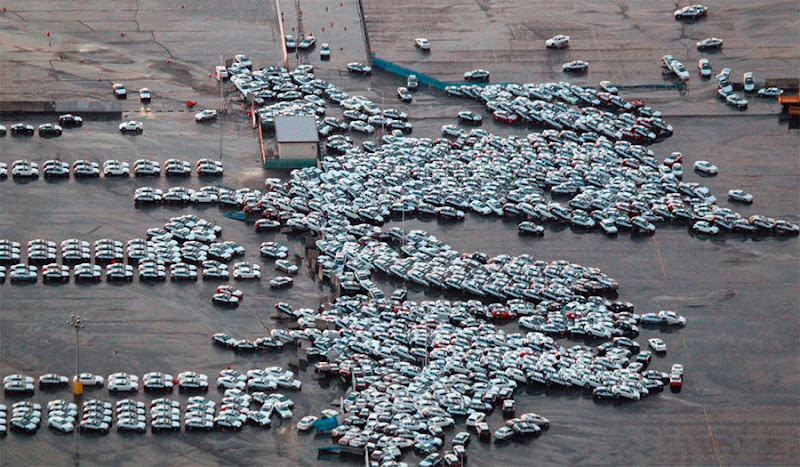
(a house drifts the ocean after being swept away by tsunami, image via)
Thousands of people are left without shelter and means of transportation in the wake of combined earthquake/tsunami disaster - in freezing cold, with dwindling supplies (many stores display empty shelves, which is quite an unusual sight for Japan). Please keep Northern Japan in your thoughts, and help by donating through a respectable company - Google - at this link.

(images via)
The earthquake in Japan was so strong (the fifth strongest since 1900) that it even sped up the Earth's rotation by 1.6 microseconds, causing a day to get slightly shorter - more info
And the earthquakes continue in this "Ring of Fire" zone. It almost became a non-event to feel 6.0 aftershocks in Japan today... However, remember that a 9.0 earthquake is 1000 times worse than a 6.0 scale earthquake - the Richter Scale is logarithmic.

(images via)
---
Historic Shakings
The aftermath of the 1964 quake and tsunami in Alaska (shown here is 4th Avenue in Anchorage):


(images via)
The aftermath of the Great San Francisco Earthquake in 1906:

(photo via 1937 issue of LIFE Magazine)
Mega-size earthquakes usually happen when the ocean tectonic plate slips under the continental plate (in a process called "subduction") and catches there: the gradual movement of plates is then stopped (plates are locked together) and a huge amount of energy starts accumulating, resulting in a sudden release and a minimum 8.0 mega-quake.

(image via)
Here is an interesting graphic showing correlation between the motion of plates and releases of pressure, leading to major earthquakes:

---
Building codes are paramount
Compared to building standards in Japan, Canadian cities like Vancouver and Montreal (built on some of the most earthquake-prone areas in Canada) definitely have a problem. In case of similar disaster scenario, most of the older buildings will crumble... and newer buildings may not fare much better.
Even in modern Vancouver current building standards are only meant to withstand a 6.0 earthquake, definitely not a 9.0 mega-quake. What's more, Vancouver airport and Richmond would be entirely covered by water in case of a tsunami, making rescue operations difficult - source.

All these concerns are quite troubling, as the subduction zone near Vancouver Island is due to produce a mega-quake similar to the Japanese one some time in the future - these quakes happen on average once in 300-500 years, and the last one was about 300 years ago, recorded by the aboriginal tribes of the Pacific Northwest.
Some photos of earthquakes in China, Afghanistan and Chile:



(images via)
Earthquake damage in Beichuan, China... see more here (warning: graphic images!) -

(image via)
The effects of ground "liquefaction", when the soil becomes almost fluid and bucks up in waves (you can see this effect spectacularly shown in the 2012 movie earthquake sequence):

(images via)
---
Roads Turning into a Roller Coaster
Upswelling makes for a bumpy ride:


Going into the cracks after New Zealand earthquake in 2010:

(image via)
This road was "unzipped" by recent Japan earthquake (producing almost a meter of displacement):

(image via)
After the 1995 earthquake in Kobe, Japan:

(image via)
Now this unique paving pattern was not caused by any earthquakes - but it did create an interesting urban landscape:

(original unknown)
Don't blame this on an earthquake, either - this is a collapsed coal mine in Victoria, Australia:

(image via)
----
Tsunami is not over in an instant... it just keeps coming, and coming...
This is the strangest thing about this calamity: it just builds in strength - at first the amount of water seems almost insignificant and comparable to river flood. But then more and more water arrives, and it gathers strength: consider that one cubic meter of water weighs 1,000 kilograms, or one tonne (a metric ton)! Such force is going to sweep everything in its path, making escape in a car or on a building rooftop quite questionable.


(image via)
Here are some simulations of a tsunami from various Japanese movies: they all show a huge frontal wave... in reality though, the tall front can be absent and instead - an unstoppable mass of water surges along the ground. Black, full of debris, some of which is set on fire.


(simulation of a nightmare tsunami, from Japanese & Korean movies)
There is never one single wave either. Helicopter footage clearly shows row after row of deadly waves.




(images via)
Check out this huge maelstrom in the wake of tsunami... note how it dwarfs a boat near its center:

(image via)
See "before" and "after" aerial photos of the affected areas here. Also, perhaps the most harrowing videos of tsunami are collected on this page.
---
Yellowstone Time Bomb
Sometimes an earthquake swarm can signify a much worse development, like a full-scale eruption of a volcano. The recent investigation into the earthquake swarms at Yellowstone - see here - paints a picture of magma chamber unrest and significant ground-swelling, which may or may not lead to a Supervolcano explosion in a few hundred years.

(image via)
Combined with the Cascadia Subduction Zone proximity, all this makes life in the American (and Canadian) Northwest very interesting.

---
Canine Earthquake Rescue Jacket
"Daschunds, the breed, was created to crawl through rabbit holes to chase out rabbits and groundhogs, but their size and shape makes them useful to crawl through rubble and collapsed buildings and locate victims... and bring them a small bit of food while they wait for rescuers to lift debris and rescue them"

(image via)
Source


No comments:
Post a Comment